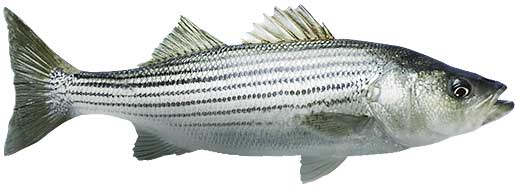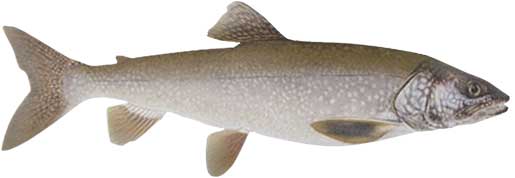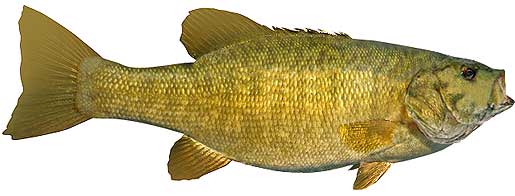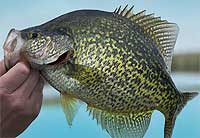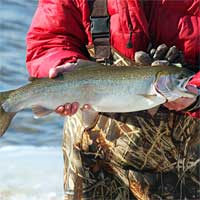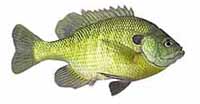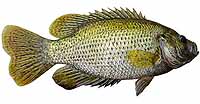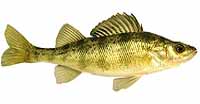Fishing Report For Raystown Lake PA
By Rick Seaman
Last updated on .
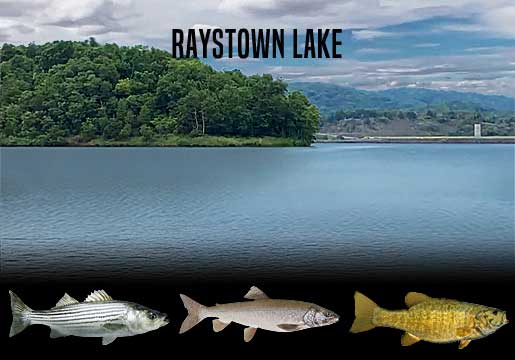
Fishing Reports
Popular Fish Species Raystown Lake, PA
Striped Bass
Current Report: Good
FALL. In Fall, hybrid stripers return to shallower water. Local guides report the best fishing for stripers is from the Seven Points Campground area to the Raystown Dam. Early in the day wipers chase bait to the surface and feed aggressively, making this an excellent time for topwater action. Look for shallow water nearby deeper sections in the upper river channels, and fish them thoroughly. Most any lure that resembles shad will catch wipers at this time of year. Throughout the day stripers are being caught from 15 to 40 feet deep.
WINTER. In Winter, stripers again hang out in deeper water and feed above or close to the bottom, from 40 to 100 feet deep. Warm, sunny afternoons occasionally draw stripers shallower, to around 20 or 30 feet deep as they feed on roaming schools of baitfish. The lower lake basin, along deep channels is holding schools of stripers, especially in the section of lake around the dam. Locate schools of bait, then look for stripers close by. Fish finders, and forward facing sonar, are a big help in locating these roaming schools. Nice stripers are caught while drift fishing with live bait or cut bait. Spoons, blade baits, and heavy hair jigs are also effective this time of year. Due to the stripers slower metabolism this time of year, anglers are triggering more strikes by working baits more slowly.
SPRING. Water temperatures are return to the mid 60's, and that's ideal for the stripers to spawn. In Spring, work the upper end of the lake, and the backs of coves, where there is inflowing water. If they spawn, this is where they will lay eggs in the moving water. They also move into transition zones on the main lake, in 10 to 30 feet of water, feeding on baitfish which are moving toward the shallows. Expect to locate them on mid-depth ledges, flats or points. The lake record is over 50 pounds, and some anglers believe there are bigger ones to be caught.
SUMMER. Summer months are the ideal time to chase striped bass on Raystown Lake. In Summer, these stripers hang out in deeper water during the heat of the day, 60 to 80 feet deep, or deeper. Much of the time they are holding over deeper, open water. Morning often draws the stripers shallower, so look for them around the 40-foot range as they feed on roaming schools of baitfish. Being successful at fishing for stripers in Summer is a matter of locating schools of bait, and the wolf packs of stripers are likely to be nearby. Fish finders, and sonar electronics, are a big help in locating these roaming schools. Nice stripers are being caught while trolling or drift fishing. Spoons, blade baits, crankbaits, live bait and cut bait are all effective here.
Lake Trout
Current Report: Good
FALL. Lake trout are returning to relatively shallow water, as Fall weather cools the lake. They spawn in the Fall, and for a few weeks can typically be found 30 to 70 feet deep on points, flats and humps that have a rocky bottom. Lake trout feed on small fish, so lures imitating baitfish, sunfish, perch or small trout are good choices. Flashy spoons can be fished at any depth, either jigging, trolling or cast and retrieve. For big lakers, use larger baits.
WINTER. Lake trout live the majority of their lives in deep, colder water. The lake is as much as 200' deep in the deepest sections toward the dam, so concentrate on areas where these lake trout can go as deep as they like. Reportedly, the best catches of lake trout come from the Raystown Dam to the Seven Points area. Deep trolling is popular with a variety of lures and baits. Favoring water temperatures in the 40's, lake trout find areas to their liking in 70 to 120 feet of water, and tend to stay there throughout the cold months. Patient anglers willing to work slowly are catching some nice lake trout. Trolling with leaded line or downriggers, or vertical jigging with spoons and jigs, completes the cold-water season in 100 feet of water, or deeper.
SPRING. Spring weather finds lake trout, along with baitfish, into 20 to 50 feet of water. Early Spring is a prime time to catch big lakers. Lakers are being caught in areas of the lake which have deep water next to shallower feeding spots. Jigs and heavy spoons are catching the majority of these big feeders. Slow trolling with leaded line or downriggers allows small crankbaits and spinners to be worked in deeper water, which also produces some nice lakers.
SUMMER. Summer heat drives lake trout deeper, generally below the thermocline in 60 to 100 feet deep. Lake trout prefer to stay deep, near the thermocline throughout Summer. They look for depth variations like ditches, channels, humps and ledges, but are being caught in the deeper water around this structure. Heavy spoons and jigs, as well as very slow trolling, with leaded line or downriggers, produce many of the lakers being caught during Summer.
Smallmouth Bass
Current Report: Good To Very Good
FALL. As Fall arrives, smallmouth here follow schools of baitfish into coves and bays 10 to 25 feet deep. Raystown Lake is widely-known as an exceptional smallmouth bass fishery. They thrive in the cold, clean water, which is an ideal environment for them. Locals report that tube jigs are a great choice when the bass are in 15' or shallower. Drop shot rigs with small worms or shad shaped plastics are also popular in 10' water or deeper. Jerkbaits, deep-diving crankbaits, and slow-rolled spinnerbaits, are also successful. Later in Fall, smallies move to slightly deeper water, around 10 to 20 feet deep. Fishing shallow for smallmouth is often good on cold, windy, cloudy and rainy days.
WINTER. Winter will isolate them around deeper structure, points, flats and creek channels, often suspending in open water above these features. They can generally be found from 25 to 45 feet deep. Jigging spoons, drop shots and Ned rigs often produce when fished with a very slow presentation. Here they hold, feeding less frequently, awaiting warmer water to return in Spring.
SPRING. When water temperatures rise into the 50's now, smallmouth have moved from deep wintering spots to shallower water, just outside spawning areas. They feeding heavily in 5 to 20 feet of water at this time, and are typically caught on jerkbaits, crankbaits, tube baits, Ned rigs, and crayfish imitating plastics. Once water warms into the high 50's, they move into shallower water, and create nests in gravel or sand areas, then lay their eggs. Females then move to deeper water and males remain to guard the eggs, and then the fry. After a couple weeks, the males also move to 15 to 25 feet deep, and feed aggressively. While fishing for smallmouth, I always look for rock and gravel banks close to deep water. Haws Run, around Raystown Lake Recreation Area, around Tatman Run and throughout the Seven Points area, are reportedly popular smallmouth areas. Crankbaits, tube baits, Ned rigs, plastic worms, spoons and swimbaits are catching smallies during this period.
SUMMER. Smallmouth bass are currently feeding shallow early and late in the day in 10 to 15 feet of water. They are being caught on spoons, swimbaits, Ned rigs and tube baits. Smallmouth bass here feed on crawfish, minnows, and small sunfish. They prefer rocky or gravel bottom areas, as this is where crayfish live. During the hotter parts of the day, they are being caught on points, humps, and ledges 15 to 35 feet deep. Often these deeper fish are part of a school of smallmouth.
Fishing Video
Fish species to fish for...
Guide to fishing for largemouth bass, smallmouth bass, channel catfish, black crappie, walleye, rainbow trout, brown trout, lake trout, bluegill, rock bass, yellow perch, atlantic salmon, chinook salmon, striped bass, hybrid striped bass, muskie and sauger at Raystown Lake in Pennsylvania.
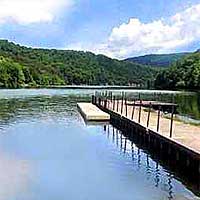 Spanning 28 miles in southern PA, in the heart of the Allegheny Mountains, Raystown Lake is fishing, camping and outdoor recreation paradise. With over 100 miles of shoreline and over 8,000 surface acres, there is plenty of water to fish. And the lake is host to a wide variety of fish species including trout, bass, crappie, perch, stripers, walleye, sunfish, catfish and salmon.
Spanning 28 miles in southern PA, in the heart of the Allegheny Mountains, Raystown Lake is fishing, camping and outdoor recreation paradise. With over 100 miles of shoreline and over 8,000 surface acres, there is plenty of water to fish. And the lake is host to a wide variety of fish species including trout, bass, crappie, perch, stripers, walleye, sunfish, catfish and salmon.
Primary fish species to catch
Click images for fishing tips and details about each species.
Today's Weather & Forecast
Fishing Boat Rentals
Marinas
Click here for marinas.
Public Boat Launch Ramps & Landings
Click here for boat ramps.
Fishing License
Click here for a Pennsylvania Fishing License.
Map - Fishing & Access
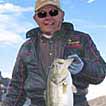 Rick Seaman is a fishing enthusiast with over five decades of fishing experience, a retired tournament fisherman, author of numerous published articles on fishing, and co-author of the book "Bass Fishing - It's not WHAT you throw, It's WHERE you throw it".
Rick Seaman is a fishing enthusiast with over five decades of fishing experience, a retired tournament fisherman, author of numerous published articles on fishing, and co-author of the book "Bass Fishing - It's not WHAT you throw, It's WHERE you throw it".
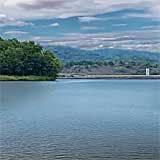 Contact Information
Contact Information
Lake Raystown Family Camping
11601 Piney Ridge Rd
Huntingdon, PA 16652
814 643-3377
Fishing lakes in each state
100925
Raystown Lake in Pennsylvania
PENNSYLVANIA


Trout, catfish and salmon fishing in south-central PA.


